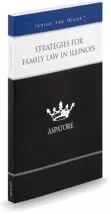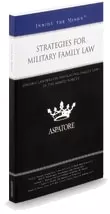Domestic violence is never called for and never appropriate. Despite this, thousands of people find themselves in situations of domestic violence every year, without any idea of what to do. Because domestic violence can look many different ways, it can be challenging to identify, especially as the victim. What’s more, most victims of domestic violence know and love their abusers, and it can be painful and confusing to admit that their behavior is harmful. In some situations, the violence is overt and obvious, but victims are frightened and unable to take action. In other cases, the behavior is subtle and can be easily written off or ignored.
Laws Protect Domestic Violence Victims
No matter the situation, it’s important to know that there are laws to protect victims of domestic violence and plenty of people within the legal system ready to help. However, to seek help, it’s crucial to have comprehensive information about domestic violence, how it is handled, and what can be done.
Types of Domestic Violence
As mentioned, domestic violence can look many different ways. There is no single definition of this type of abuse, except to say that it happens between two or more people living in the same household. The type of abuse or violence, however, can vary from situation to situation. There are a few main categories that sum up a lot of these situations.
- Physical abuse. When most people think about domestic violence, they imagine physical abuse. This type of violence involves kicking, punching, beating, hitting, pulling hair, pushing, etc. There do not need to be physical signs (i.e., bruises, scratches, etc.) for this type of abuse to be valid.
- Sexual abuse. Domestic sexual abuse involves acts such as rape, sexual coercion, using drugs to have sex with a victim, etc.
- Emotional abuse. This can be very subtle, especially if the victim has been groomed to believe that it is normal. Examples include threats of violence, threats of suicide, taunting, excessive criticism with the intent of undermining self-confidence, gaslighting, manipulation, etc.
Each of these categories encompasses other forms of domestic abuse, such as financial abuse and verbal abuse. No matter what type of abuse, there are laws to protect victims.
Anyone Can Be a Victim of Domestic Violence
It is essential to understand that anyone can be a victim of domestic violence or abuse. The law does not discriminate and protects all victims regardless of gender, race, sexual orientation, age, or ability. None of these should play a part in whether a victim seeks safety and justice. It is also important to note that the abuse does not have to happen to you for you to take action. If you are in a household where another family member is being abused by someone in the household, you have the right to take action. Because you live in the same home, abuse to any individual poses a personal threat.
Restraining Orders
Restraining orders, also known as protective orders, are among the first lines of defense for victims of abuse. There are several types of orders of protection available; each is appropriate during a different phase of the escape and recovery process. The categories of protective orders include:
Emergency Protective Order
Emergency protective orders are appropriate when an abuser is still posing an immediate threat to a victim’s safety. A victim does not need to go through the court system to receive an emergency protective order, but they protect the victim immediately. They can be obtained through a sheriff or police officer at any time of day, and they last for 14 days after being approved. During this time, the victim can file for a more long-term protective order.
Final Protective Order
These protective orders are more permanent and are assigned by a judge. There are two types of orders within this category: five-year and continuous. A five-year protective order is the standard length of time that a judge will assign. The time is calculated as any time spent outside of jail (if the abuser is incarcerated during this time, it does not count toward the five-year protective order). A continuous protective order is assigned if the abuser has been known to violate court orders in the past or if the abuser has another protective order filed against them in any state. Continuous protective orders protect victims indefinitely.
Domestic Violence Attorneys
Though it is not required, it is within your best interest to hire an attorney if you have been a victim of domestic violence or abuse. An attorney can help you file the necessary protective order paperwork and ensure that the information on them is correct and valid. An attorney can also assist you in claiming a home, car, child custody, child support, or any other type of resources or support you may need to rebuild your life away from your abuser. This process can make you feel helpless and intimidated, which is why many victims stay with their abuser longer than they would like to. With an attorney on your team, you can be sure that the proper steps are being taken so that you can feel permanently safe and so that your abuser never hurts you again and is brought to justice.
Though it is unfortunate, there is a chance that others will not believe your accusations and even occasions of false accusations. If you hire an attorney, they will help legitimize your experience and ensure that you are heard and believed by the courts.
Come to Stange Law Firm; Rebuild Your Life
At Stange Law Firm, we approach every domestic violence case with care, compassion, and diligence. We understand that these situations are complicated, and many victims who come to us feel scared and lost about what to do. With almost two decades of experience, we have the expertise to ensure that our clients see justice and that they feel safe and protected as they rebuild their lives. If you have been a victim of domestic violence or abuse, time is of the essence. Contact us today.





